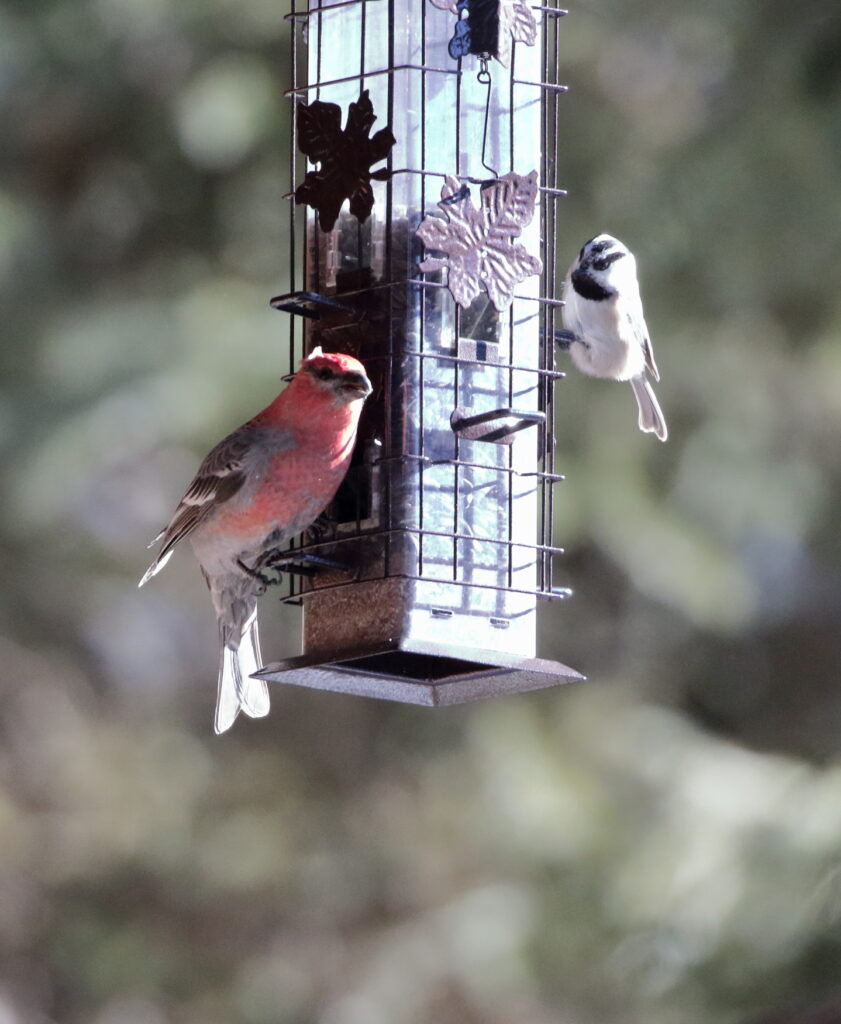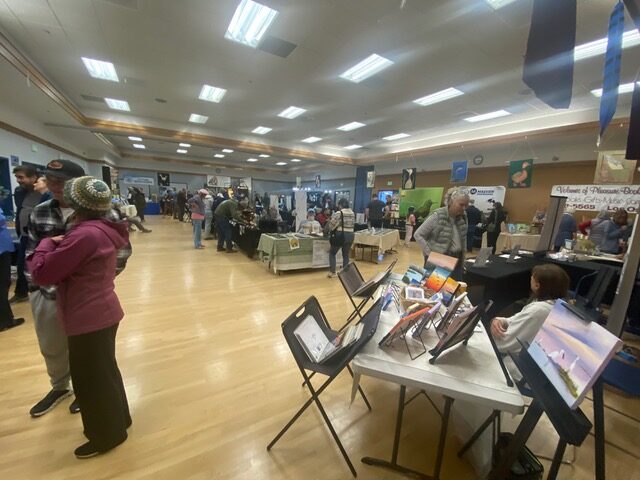“Call me asap,” Roger’s text read. A few minutes later, I dialed his number. “What’s up?”
The answer: a chance of a lifetime.
As faithful FSB readers know, Roger is a longtime friend of mine from UC Berkeley, and a guest contributor to FatherSonBirding. More than six months ago Roger and his wife, Claudia, began planning a dream birding trip to the world’s epicenter of awesome birding—the country of Colombia. How awesome is Colombia? Well, during the Global Big Day of birding each year, Colombia regularly kicks butt on all challengers. In 2024, its birders recorded an astounding 1558 species in a single 24-hour period—more than twice the number of the US despite submitting only about 15% of the number of checklists. It is widely considered to have the highest biodiversity per square meter of any country on earth.
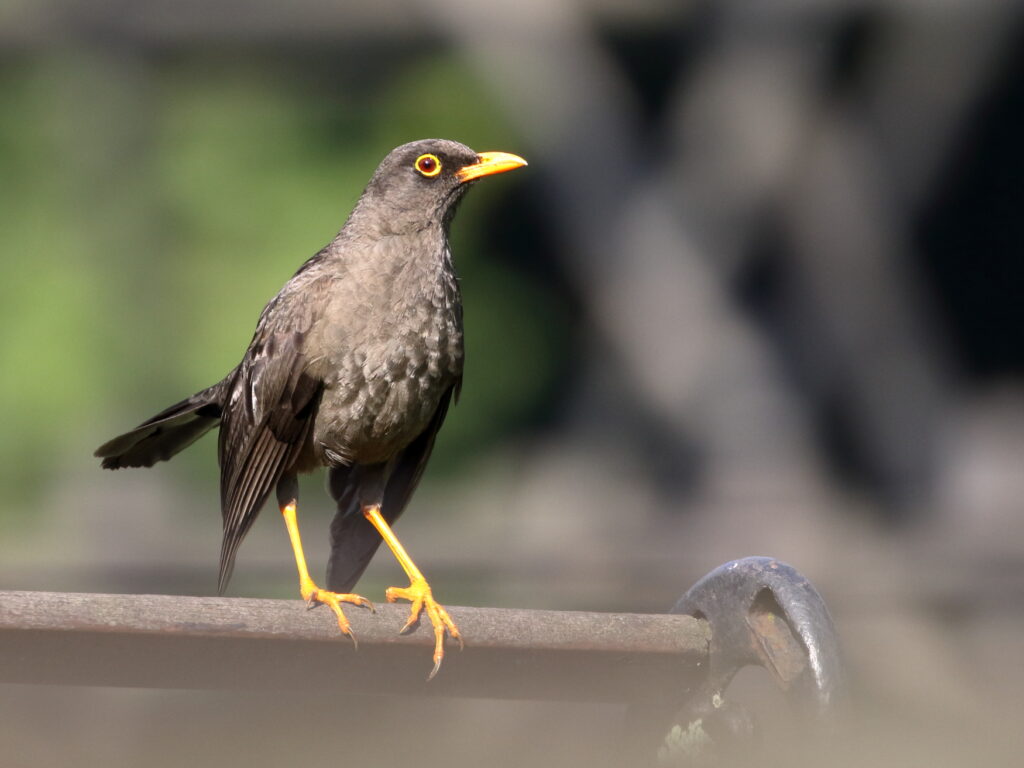

Sadly, Colombia has a long history of violence that has made it mostly off-limits to birders for decades. That began to change in 2016, when a peace agreement was signed between the government and FARC, the military wing of the Colombian Communist Party. Violence still racks some parts of the country, but that has not prevented a growing number of birders from seizing the chance to visit one of the world’s most spectacular ecological regions. About six months ago, Roger decided to join those growing ranks. He and Claudia mapped out a two-week trip that would include a feast of birding opportunities. However, as the great oracle of our time, Neil Young, sang, “The devil fools with the best-laid plans.” Two weeks before their trip, Claudia was forced to cancel, and Roger asked if I wanted to fill her slot. With a quick nod from Amy and the urging of Tessa, it took me about two minutes to decide.
The plan was to meet up in the Andean city of Pereira to begin our birding adventure (of which I’ll write much more later). Roger planned to fly from his home in Bend, Oregon to Miami and spend the night; then fly to Pereira via Panama City the following day. Being a Delta Airlines loyalist, I left a day earlier, spent the night in Atlanta and then flew to Bogota for a night. This excited me greatly because it would give me a morning to myself before catching a flight to Pereira to meet Roger. Gee, what oh what might I do with that morning?

Not by accident, I booked a room in the Hotel Capital, strategically located a short taxi ride to two major birding possibilities. Rising early, I wolfed down a granola bar for breakfast and then caught a cab to Parque Metropolitano Simón Bolívar, one of the world’s largest urban parks. In my atrocious Spanish, I told the cab driver of my interest in birds and he dropped me off at the SW corner of the park near a large central lake. I had worried a bit about carrying my camera and binoculars in this unfamiliar city, but my hotel concierge had assured me the park would be safe. Sure enough, I was relieved to see a steady stream of joggers, dog walkers, and cyclists taking advantage of a beautiful sunny morning. But what of the birds?
As I walked toward the lake, I saw plenty of Great Thrushes and Eared Doves, and Sound ID picked up the songs of Rufous-collared Sparrows, a bird Braden and I had become friends with on our family trip to Ecuador and Peru in 2017.
Like a birder magnet, however, the lake drew me forward. When approaching a large body of water like this, I always look for legions of water birds to be gracing the water, and in Japan and last year’s trip to Barcelona, that had indeed been the case. Not today. Evidently, ducks just aren’t as big a deal in the tropics as in temperate zones. I did spot what looked like a domestic hybrid duck of some sort, accompanied by a much smaller bird, and I focused in on the latter for the day’s first surprise—a Pied-billed Grebe! “I didn’t know they lived this far south,” I thought. Indeed, I later learned that in the Americas, Pied-billed Grebes have the largest distribution of any grebe, stretching from mid-Canada almost to the tip of South America.

A hundred meters farther, I caught movement in bushes and discovered one of the real prizes of my outing—a mixed flock of warblers! And not just any warblers, but three species that breed in the eastern US. One revealed a brilliant splash of orange on its face. Can you guess which one it was? That’s right—Blackburnian Warbler! It was accompanied by several Tennessee Warblers and my first look at an actual Rufous-collared Sparrow.

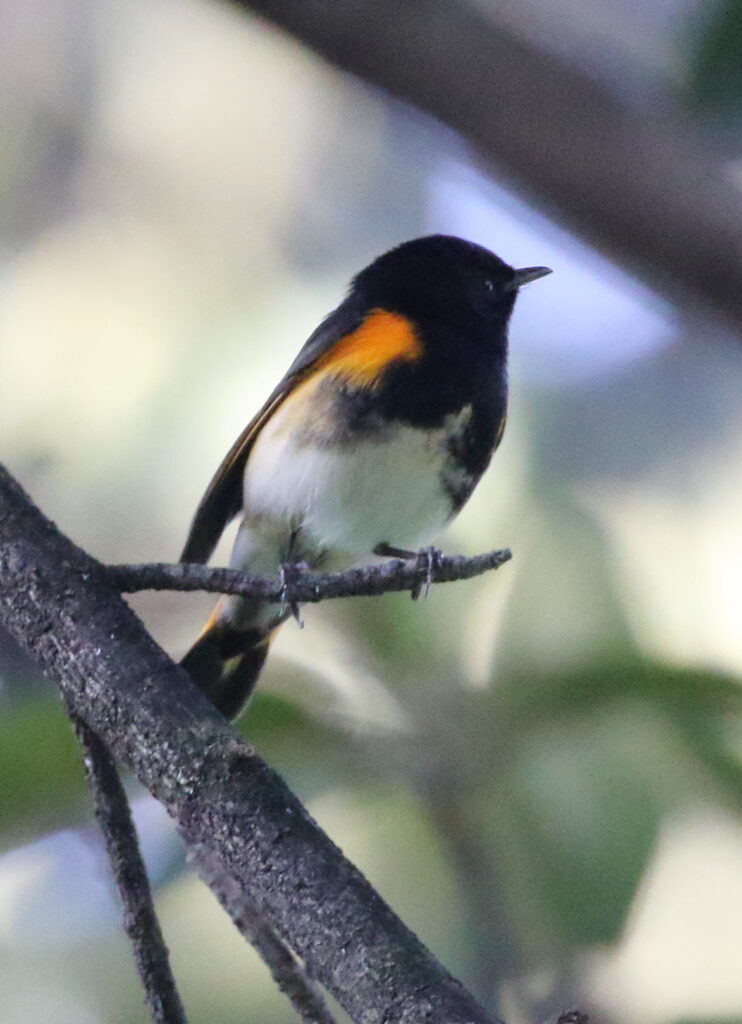
As I followed the flock around, I got an even bigger surprise—a bonafide American Redstart. “Wow!” I said out loud, trying to get a photo of one of everyone’s favorite warblers.
From the main “parky park,” I crossed a pedestrian bridge over jammed up morning traffic and entered a sprawling sports complex.

Soccer players were warming up, track and field athletes ran around a track, and tennis players smacked balls back and forth. Next to the walking path, a pair of familiar-looking black-and-white birds hopped up onto a sign. It didn’t take me long to figure out they were Tropical Mockingbirds—the only ones I would see on the trip! Then, a familiar, largish bird flew noisily by and disappeared over the wall into a stadium. Here, Braden’s and my travels to Israel paid off. Southern Lapwing! my mind immediately shouted. My real destination, though, lay just ahead.

I paid two bucks to enter the Jardin Botanico de Bogota—which, like the sporting complex, was technically part of the Simón Bolívar Park—and asked a greeter where I might find birds. Then, I set off to explore. My first find? Gorgeous Purple Gallinules. Hummingbirds also flew by, but knowing just how many hummers fill South America, I wasn’t psychologically ready to tackle those just yet.

Continuing on alongside a wooded area, I spotted a bright red shape about twenty feet high on a branch—my first South American Summer Tanager! I saw another traveler staring up into the trees and walked over to introduce myself. “My name is Edwin,” he told me, along with the fact that he was from the Netherlands. “Are you seeing anything?” I asked him. “Yes, but I don’t know what they are,” he confided. I got my eyes on fast-moving, small shapes and recognized another Blackburnian Warbler, along with what I think were more Tennessee Warblers. I told Edwin what I was seeing.
“Hey, did you see the Summer Tanager?” I asked, and his eyes widened. “No!” So I led him back to where I’d spotted it, relieved to finding it still perched, evidently being well-paid by the botanical gardens staff to stay in place.

By this time, I was only up to about twenty species, which seemed like a rather poor showing for a morning in a brand new tropical country, even if I was in a major city. Only one of those species, Shiny Cowbird, was a lifer. Even worse, it was about time for me to flag down a cab and make my way back to the hotel so that I could shower, pack, and get to the airport for my flight to Pereira. Before leaving the gardens, however, I decided to make one last stop where I had seen the gallinules. Suddenly, I detected a small bird flitting among some flowers, and my pulse picked up. I didn’t know what it was, but got some decent ID shots of it. As I zoomed in on one of my photos, a smile spread across my face. It was a flowerpiercer—the first I had ever knowingly seen! Later, I consulted with Braden and we agreed that it was a beautiful little species called a Rusty Flowerpiercer.
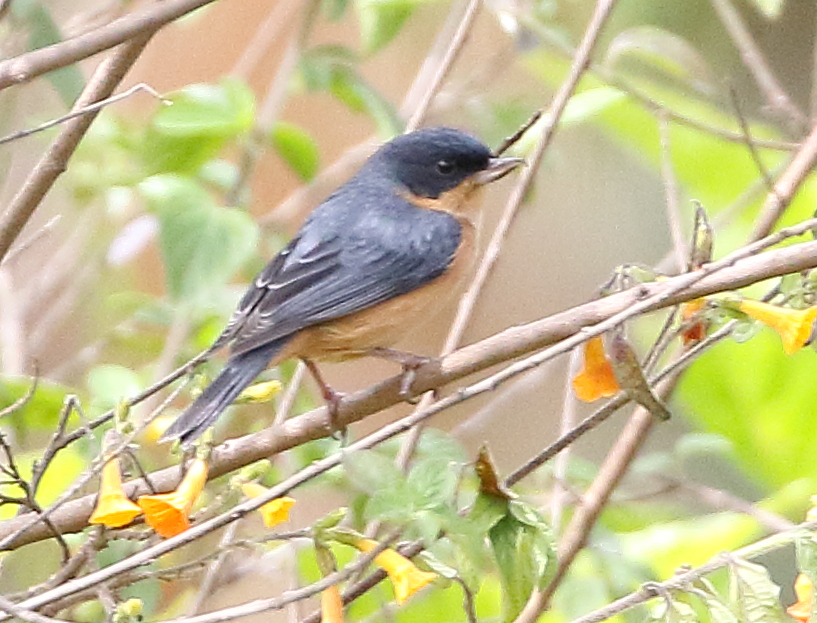
It was a great way to finish off a fun morning of layover birding in a new country. It also laid the groundwork for what would promise to be an adventurous—sometimes too adventurous—next couple of weeks.




















